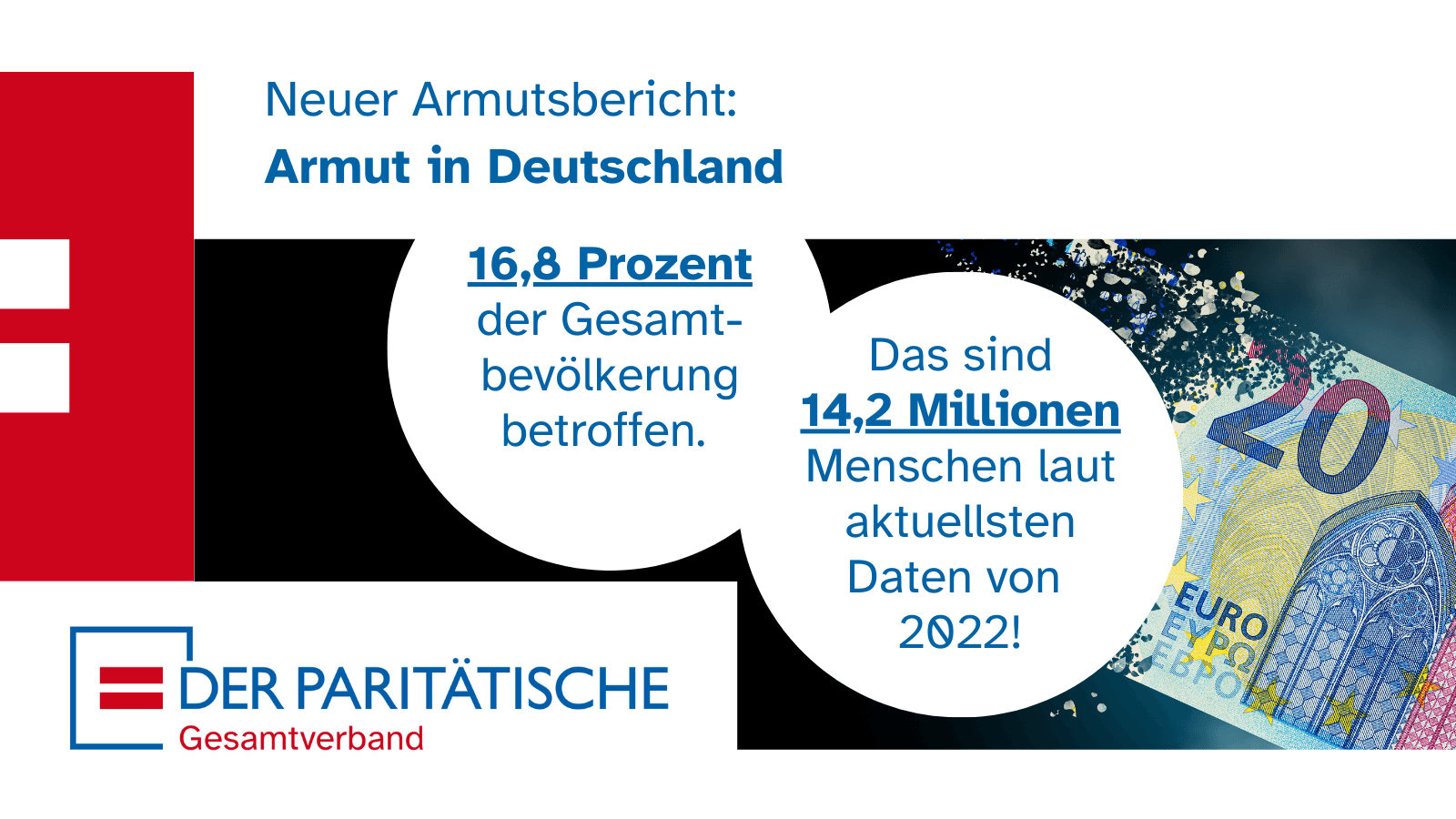Insights from the Paritätischer Armutsbericht 2024
- From Xhulia Likaj
- Reading duration 2 min

Germany's poverty levels remain persistently high according to the latest** Paritätischer Armutsbericht (Joint Poverty Report 2024: Poverty in inflation)**. With recent figures indicating that 16.8% of the population live in poverty, the study highlights stark regional disparities among the federal states.
The report reveals that almost two-thirds of the adult poor are either employed or retired and that one fifth of all children and young people are affected by poverty. While the continuous increase in poverty may have halted at the federal level, the trend is far from being reversed. With 14.2 million people classified as poor, the number has risen by nearly a million since the pre-pandemic, energy, and price crises of 2019, and by 2.7 million in the last 15 years. The study particularly notes the vulnerability of single parents, large families, individuals with low educational attainment, and non-German citizens, with women facing a significantly higher poverty rate than men, particularly in older age groups. Alarmingly, the rate of child poverty has surged to a new record with more than one in five children affected (21.8%). Among single parents, the poverty rate is 43.2%.
The disparities across regions and within larger states like Bavaria, Saxony-Anhalt, Lower Saxony, and North Rhine-Westphalia underscore the need for targeted policies. Effective poverty alleviation strategies proposed include a significant increase in the minimum wage, a needs-based child benefit system, pension reform with a guaranteed minimum to prevent poverty, an uplift in pension levels, transformation to a citizen's insurance model, a solidary full care insurance, and robust measures to control rent prices.
